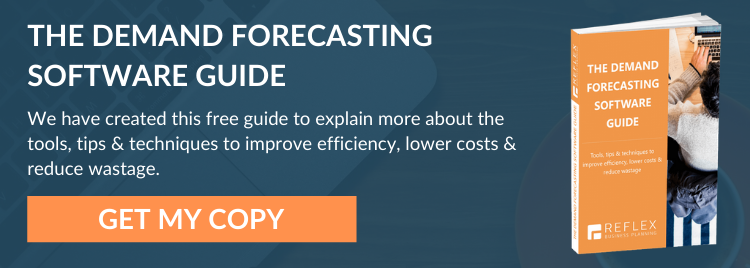The art of demand forecasting for businesses can be incredibly tricky to get right at the best of times. Due to the COVID-19 pandemic, making accurate sales forecasts for 2020-2021 is a hard challenge for professional predictors.
Seemingly random local lockdowns, rapid changes in consumer behaviour and spending, an eccentric and hard-to-predict recession, and strange patterns of investment have made for a unique and chaotic landscape. Software and analysts rely on past data to produce an accurate picture of the future. When something unprecedented or unexpected happens, a rigid algorithm or basic model struggles to cope.

Here are five simple tips you can apply to your demand forecasting stategy to make sure that your prediction software isn’t caught off guard.
1) Emergency Adjustments With Empirical Data
The easiest way to change your prediction models to cope with new challenges is to draw on the consumer data we’ve already gathered from COVID-19. Building changes into your models now will help you weather a potential second wave and any downturn over the coming 12 months – however deep or shallow this turns out to be.
Retooling models to take into account estimated drops in sales from macroeconomic data, transport disruption (particularly air freight), changes to household budgets, and demand fluctuations is easy – the addition of a few simple variables to each database will do it. These variables can be changed and improved as data grows.
2) Micromanagement Of Vital Product Predictions
Do you offer a product or service that’s critical to your company, a best seller, or vital to public wellbeing? Building an in-depth model to track what’s going right or to improve delivery can be one strategy to enhance profits, reputation, and business efficiency. Detailed data tracking and collation can help here.
3) Streamlined Data
As our automated data gathering tools, tracking, and software improve, so does the amount of digital information companies can reasonably gather and store. ‘Big data’ can quickly turn into ‘Bloated Trivia’.
One unintentional result of such a comprehensive collection of stats is data overload – the waste of time, energy, and billable hours that results from having too much useless or sub-prime information to digest and use. Automating routine processes, trimming the collection of trivial data points, and prioritising point-of-sale (POS) direct profit analysis can all aid streamlining.
4) Better, Relevant Data Collection
Conversely, are you getting all the data you need? Tracking often overlooked metrics such as localised retail footfall (important to mitigate the effect of local lockdowns), product speed of movement, and macroeconomic budgeting can all help to enhance your predictive models for the next four quarters.
5) Competitor Tracking
If you’re offering commonplace services and products, you’ll want to keep an eye on how quickly and cheaply your competitors are delivering them. You can automate your software to track publically listed pricing and brand reputations, cross-referencing them against your performance and profit margins from wholesale/manufacturing. Building a broader picture will help you to outperform your rivals.
Demand Forecasting from Reflex Planning
Reflex Planning are specialists in providing modular demand planning software and supply chain monitoring programs to UK businesses, large and small. Our ‘build what you need’ model allows us to tailor every sale we make to the exact needs of your company. Call or info@reflexplanning.com us today to learn more.
Image Source: Unsplash

